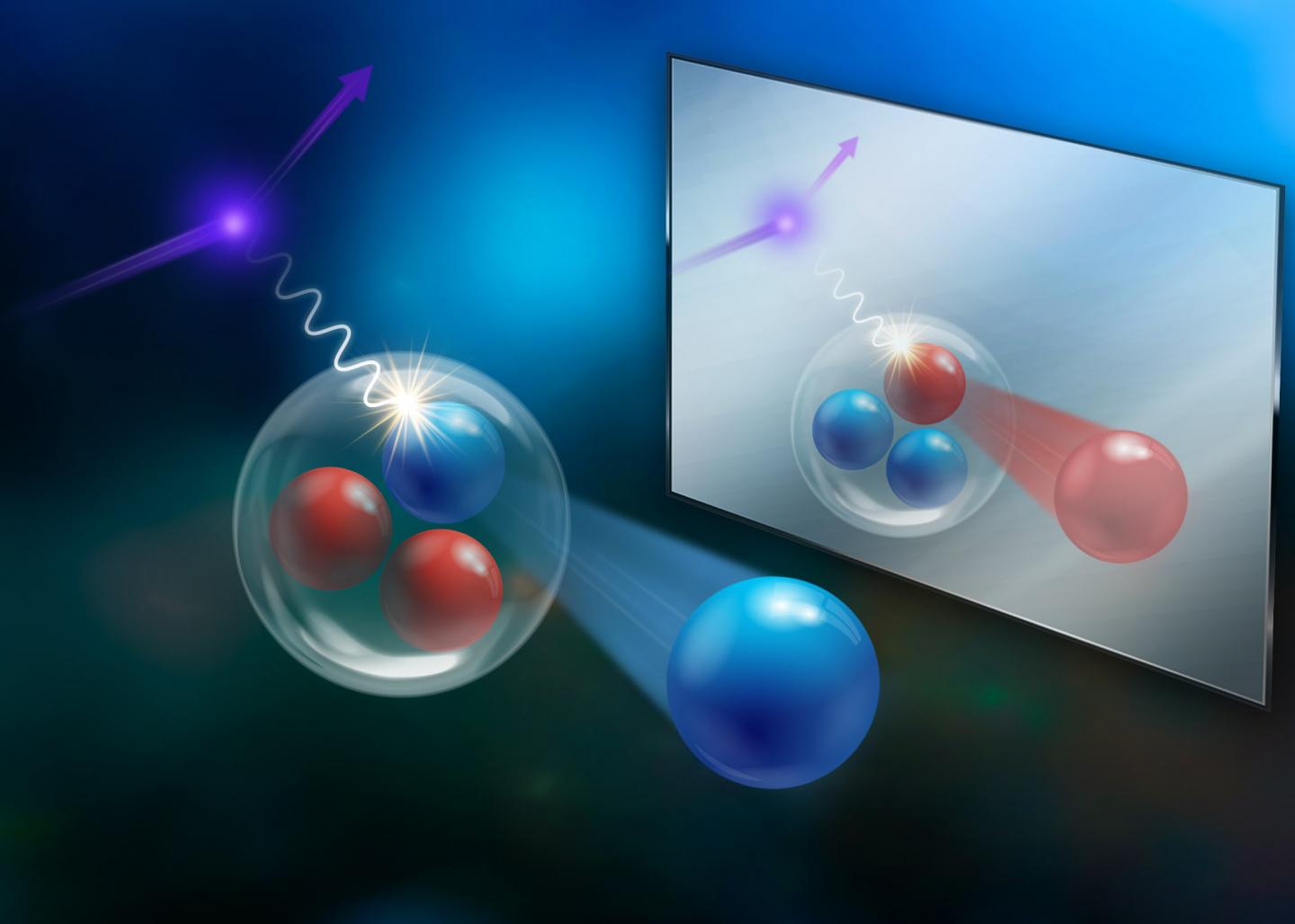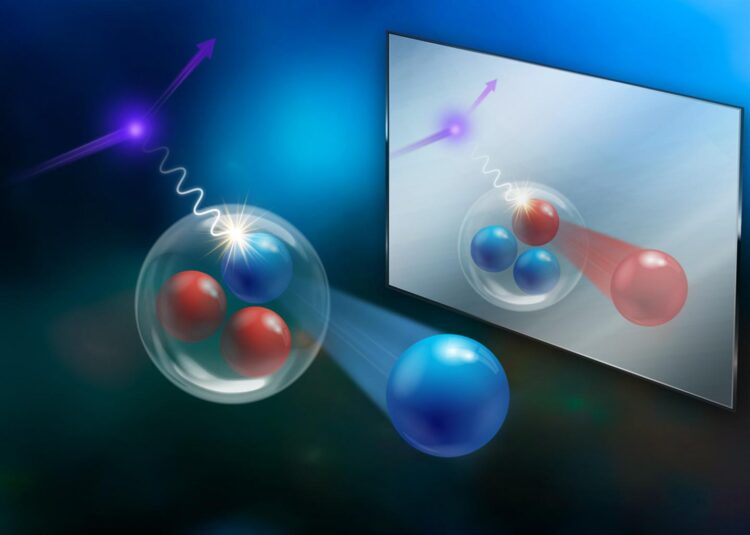A precision measurement of helium and hydrogen mirror isotopes reveals new questions in understanding of nuclear structure

Credit: DOE’s Jefferson Lab
NEWPORT NEWS, VA – It’s not often in nuclear physics that you can clearly get both sides of the story, but a recent experiment allowed researchers to do just that. They compared very similar nuclei to each other to get a clearer view of how the components of nuclei are arranged and found that there’s still more to learn about the heart of matter. The research, carried out at the Department of Energy’s Thomas Jefferson National Accelerator Facility, was recently published as an editors’ suggested read in Physical Review Letters.
“We want to study nuclear structure, which is basically how protons and neutrons behave inside a nucleus,” explains Reynier Cruz-Torres, a postdoctoral researcher at DOE’s Lawrence Berkeley National Lab who worked on the experiment as a graduate student at the Massachusetts Institute of Technology. “To do that, we can measure any nucleus that we want. But to do a high-precision test of nuclear theory, we are limited to light nuclei that have precision calculations. Measuring these light nuclei is a benchmark for understanding nuclear structure in general.”
For this measurement, the researchers focused on two of the simplest and lightest nuclei in the universe: helium and hydrogen. They focused on an isotope of helium called helium-3, so called because it contains just three major components: two protons and one neutron. The isotope of hydrogen that they tested, tritium, is also composed of three components: one proton and two neutrons.
“They are mirror nuclei. So, you can assume that the protons in helium-3 are basically the same as the neutrons in tritium and vice versa,” says Florian Hauenstein, a joint postdoctoral researcher at Old Dominion University and MIT.
According to the researchers, by comparing these relatively simple nuclei, they can get a window into the strong nuclear interactions that can’t be duplicated elsewhere. That’s because as some of the lightest and least complicated of the nuclei in the universe, these nuclei are excellent examples for comparing with the state-of-the-art theories that describe the basic structures of different nuclei.
“The theory calculations have been there for a while, but we didn’t know how good they are,” explains Dien Nguyen, a postdoctoral researcher at MIT and incoming Nathan Isgur Fellow in Nuclear Experiment at Jefferson Lab. “So, with this research, we are able to quantitatively say how good the calculation is. I think that is a really important step.”
To make the comparison, the researchers measured both nuclei in high-precision experiments in the Continuous Electronic Beam Accelerator Facility (CEBAF), a DOE User Facility based at Jefferson Lab.
Electrons from CEBAF were aimed at the nuclei of tritium and helium-3, where some interacted with the nuclei’s protons. The struck protons and the interacting electrons were then captured and measured in large detectors called spectrometers in Jefferson Lab’s Experimental Hall A.
“We use the spectrometers to study the properties of those final-state particles and look back to the nucleus and try to understand what was happening inside the nucleus before the reaction took place,” says Cruz-Torres.
This experiment was challenging and groundbreaking in that it was conducted at a wider range of energies with unprecedented precision. In addition, the tritium data are the very first ever for these studying these reactions.
The researchers then compared the full range of data from the experiments to theory calculations on the structures of the nuclei of helium-3 and tritium. They found that the data generally matched theory well for both nuclei to the precision allowed by experiment, a feat that was described by one researcher as a triumph of modern-day nuclear physics. However, differences were also observed relative to some of the calculations, indicating that further refinements in the theoretical treatments are required.
“We expected that the helium-3 calculations at the end would easily match the data, but it actually turned out that the tritium cross section fit very well the theory calculation, and the helium-3 not so much through the whole range. So, we need to go back and look at helium-3,” explains Hauenstein.
Dien confirms that this unexpected result is now the impetus for continuing these high-precision studies of light nuclei in earnest.
“Before, we thought we had a very good understanding of the calculations,” says Nguyen. “But now, the result is what is driving us to do an even more detailed measurement, because we want to make sure that we have a good agreement with the theory.”
###
Further Reading:
SRTE Support Enables Nuclear Physics Experiments at Jefferson Lab
Media Contact
Kandice Carter
[email protected]
Original Source
https:/
Related Journal Article
http://dx.





